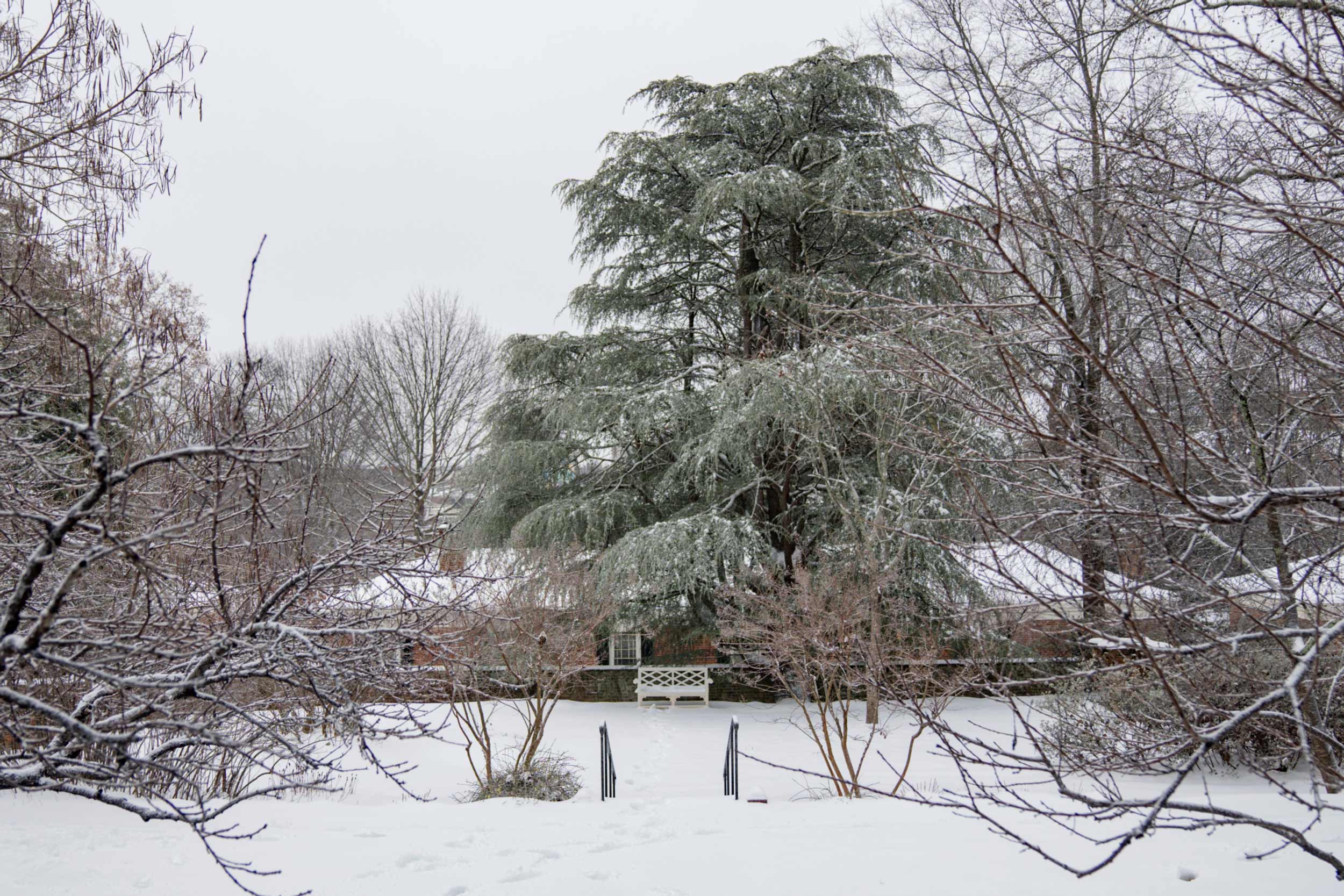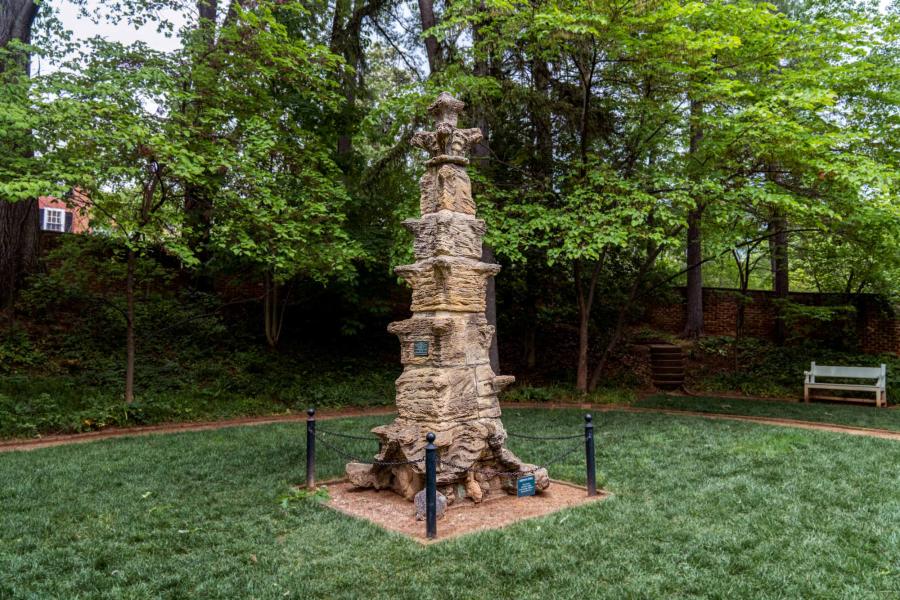While students are gone on winter break, the University of Virginia’s Grounds get a break as well, a chance for the plants to go dormant and rest.
Facilities Management landscapers perform a variety of tasks to tuck the Grounds in for the winter. These practices have evolved over the years to benefit both plants and insects. An organization, Bee Grounds UVA, encourages the preservation and propagation of bees as pollinators on the Grounds.
“In years past, we’ve collected an average of somewhere in the neighborhood of 3,500 cubic yards of leaves from the Grounds and transported them to our own compost piles on Observatory Hill,” Rich Hopkins, associate director of the Grounds, said. “But for the last few years, following the University being recognized as a pollinator-friendly site, we started a program called ‘leave the leaves,’ which involves not collecting leaves from some areas, such as around trees and shrub beds, to provide a safe environment that allows pollinators to overwinter.”
Other leaves are mowed into the turf.
“The leaves will decompose and help provide for better soil conditions in our lawns,” Hopkins said.
Horticulturist Roland Von der Muhll gives the pavilion gardens specific care.
“I cut all perennials back to 6 inches in height, but no less, in order to protect the roots from extreme cold temperatures,” he said, “And I limb up and prune boxwoods to 8 inches height above the beds.”
Von der Muhll removes “suckers” – unwanted shoots growing from the base or roots of plants – from pears, figs and other fruit trees to facilitate leaf removal and reduce risk of blight and other diseases. He also prunes ornamental bushes to facilitate leaf removal from underneath the bushes.
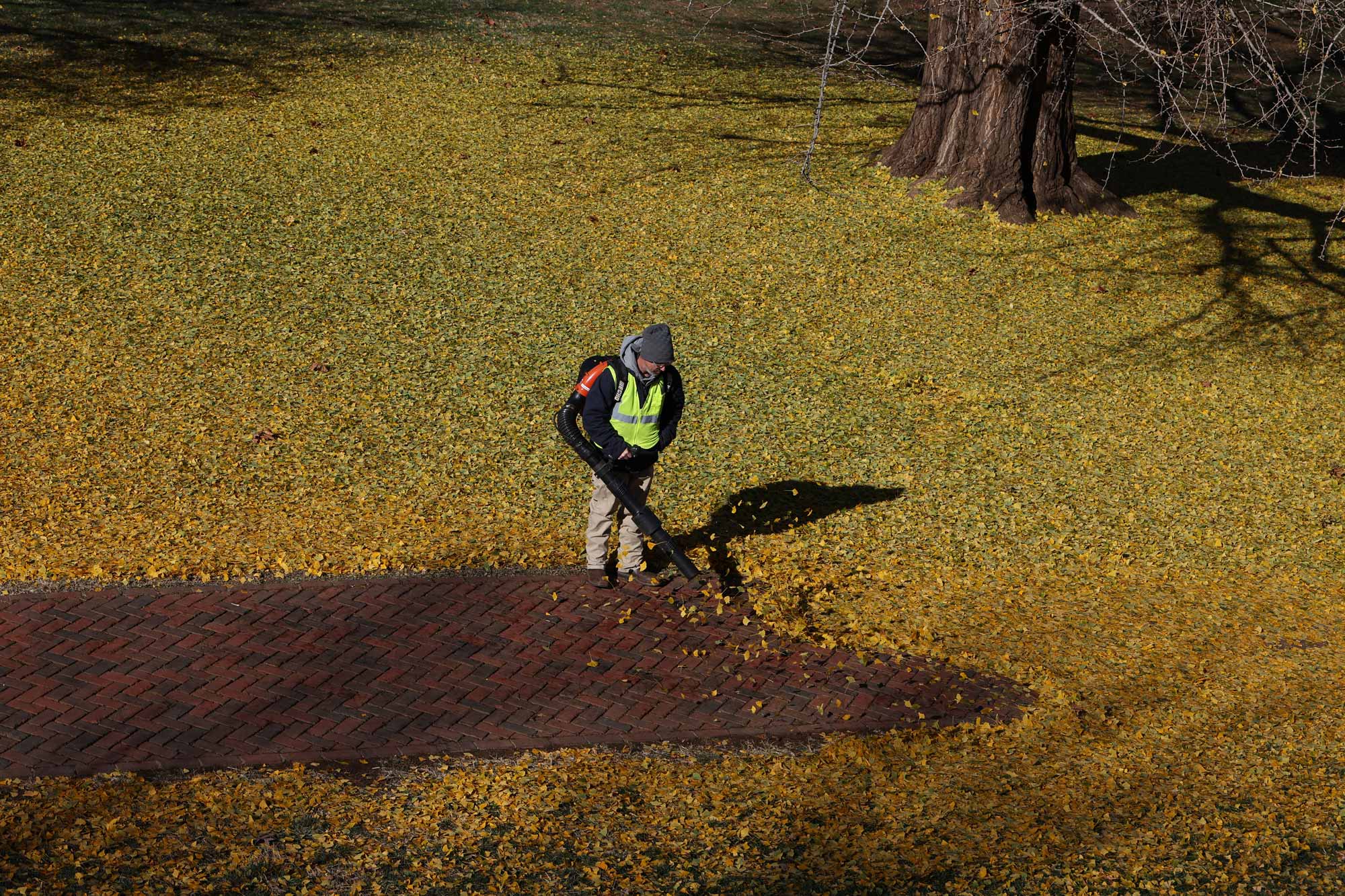
Some of the autumn leaves are gathered at the base of trees and shrubs as a shelter for pollinators to overwinter on the Grounds. (Photo by Matt Riley, University Communications)
“I inspect fruit trees to make sure autumn storms and leaf removal have not left deposits of mulch on their trunks and remove ivy and other large weeds from beds prior to large-scale leaf removal,” he said.
Von der Muhll cuts back grapevines that are close to or touching the ground so leaves can be easily moved away from their trunks.
“We perform consistent leaf removal in late fall with an eye for not allowing fallen leaves to accumulate next to the crowns of perennials and the trunks of shrubs, vines and trees, especially the fruit trees, with peaches being the most vulnerable to getting fire blight from excessive composting materials touching their trunks,” Von der Muhll said.
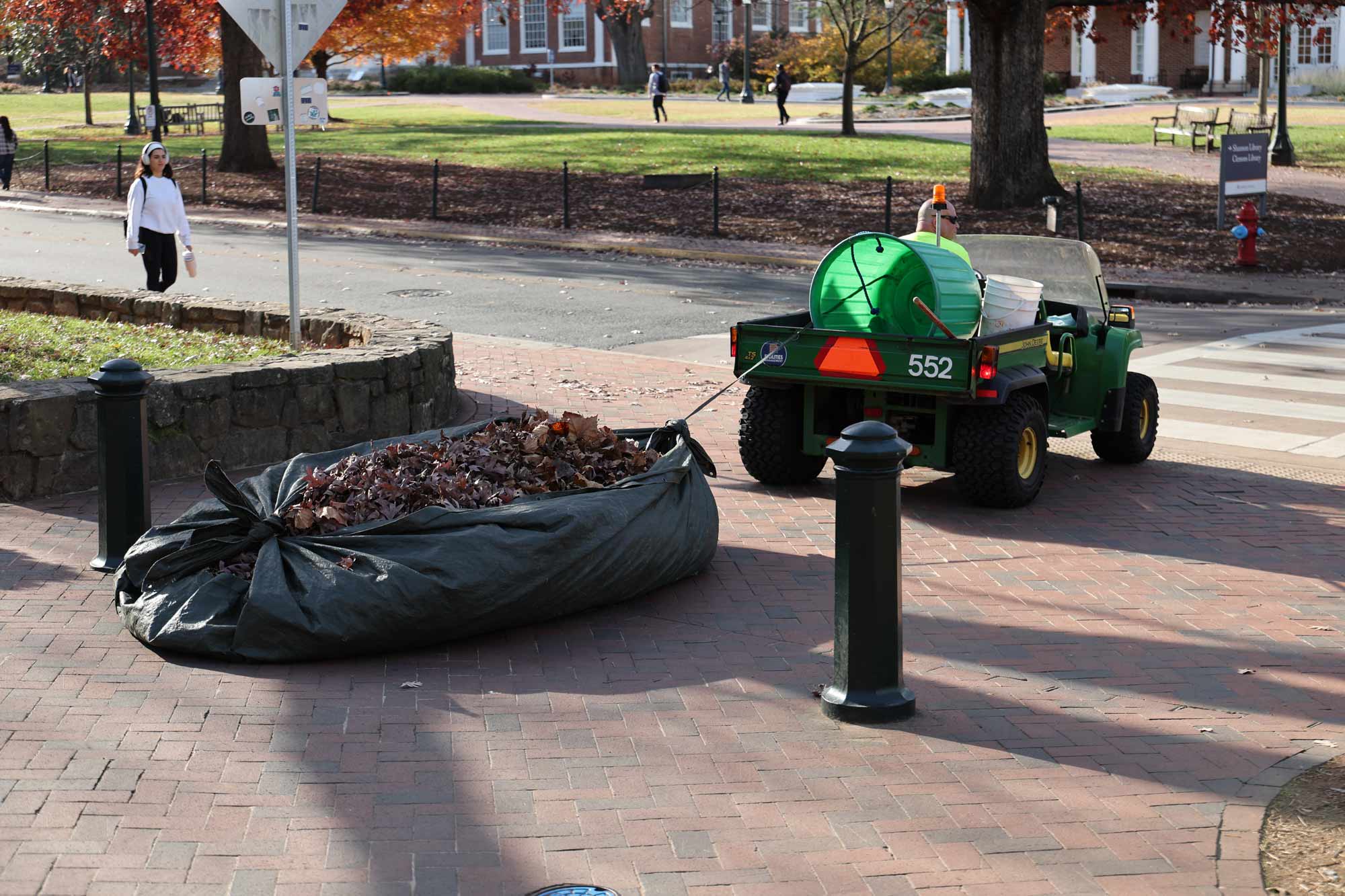
While some leaves are collected and composted in the University’s compost heap on Observatory Hill, others are mowed into the turf. (Photo by Matt Riley, University Communications)
Another essential part of the winter prep for the pavilion gardens is cleaning up fallen fruit.
“As soon as nighttime frost becomes a frequent event, we can start pruning fruit trees,” Von der Muhll said. “Pruning grapevines and roses should be left until the end of winter once consistently freezing temperatures have arrived.”
Lorenzo Brown, a landscape specialist assigned to the Health System zone, prepares the beds by watering them, as needed, before the ground freezes. Compost and mulch are applied to protect the roots, and some of the leafy perennials are trimmed back. Brown’s crew planted bulbs and removed weeds through December.
On the Health System’s green roof, the irrigation system is blown out and then shut off to prevent burst pipes, the last of the weeds are pulled and spent leafy perennials are cut back.
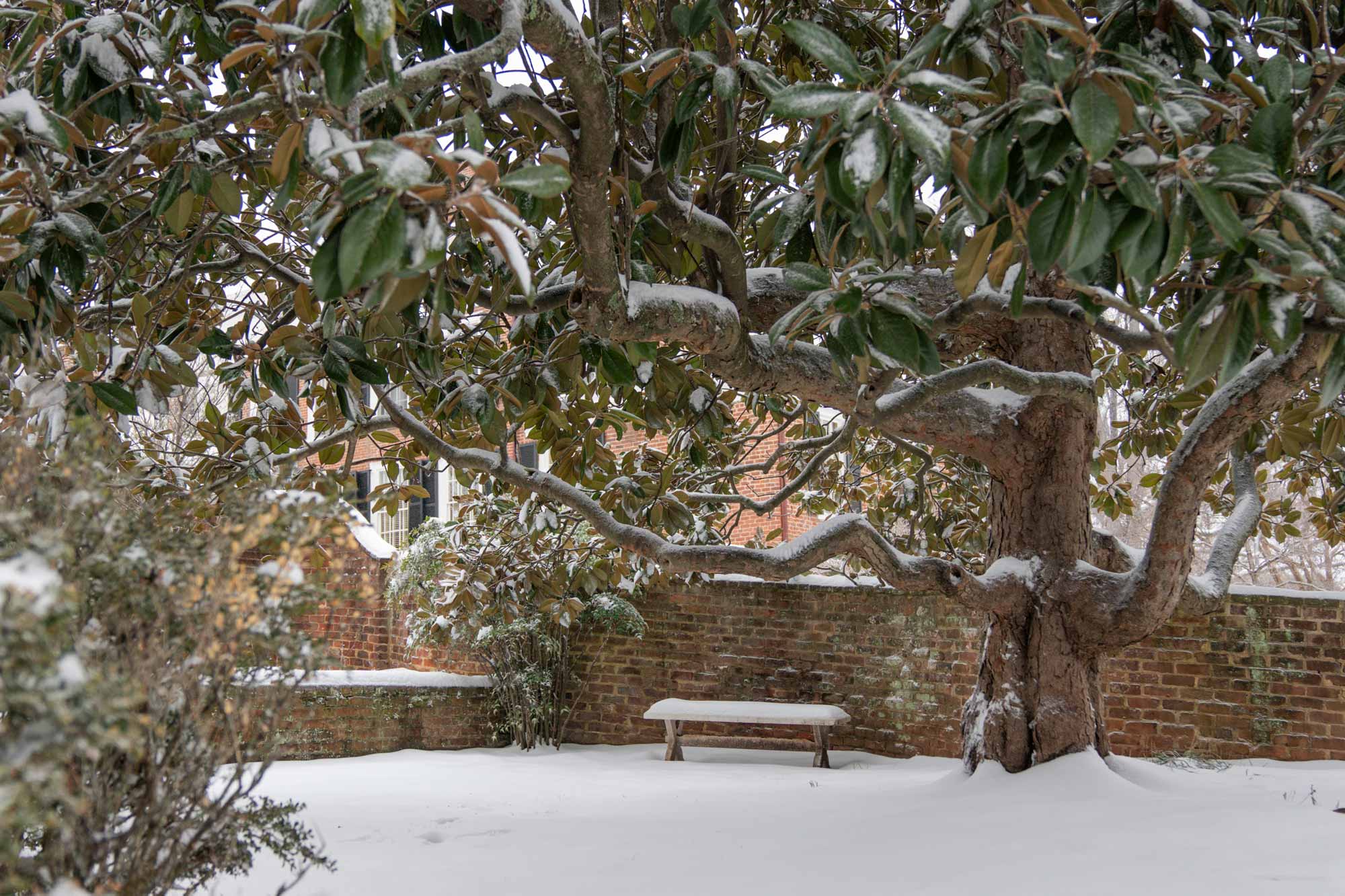
Horticulturists inspect fruit trees in the pavilion gardens and remove mulch and leaves to reduce the risk of blight and other diseases. (Photo by Erin Edgerton, University Communications)
To get the most out of the winter landscape, Brown studies sun and shade exposure, drainage and soil texture and considers planting winter-hardy species such as American holly, winterberry, witch hazel and white turtle head.
“You can have fun creating with evergreens with red berries and also deciduous species, grasses and late-blooming plants that can hold blossoms for a long period of time,” he said.
Horticulturalist Aaron Bridgeforth, assigned to North Grounds, said the key to winter maintenance is to trim away dead and damaged limbs from trees and shrubs and clear storm drainage areas, permitting water flow and preventing erosion.
“We evaluate plants for diseases and remove any affected material from the garden and dispose of it offsite,” Bridgeforth said. “We clear the leaves and debris from the edible gardens around the Forum Hotel. We mulch sensitive plants with organic matter to protect them from winter conditions.”
